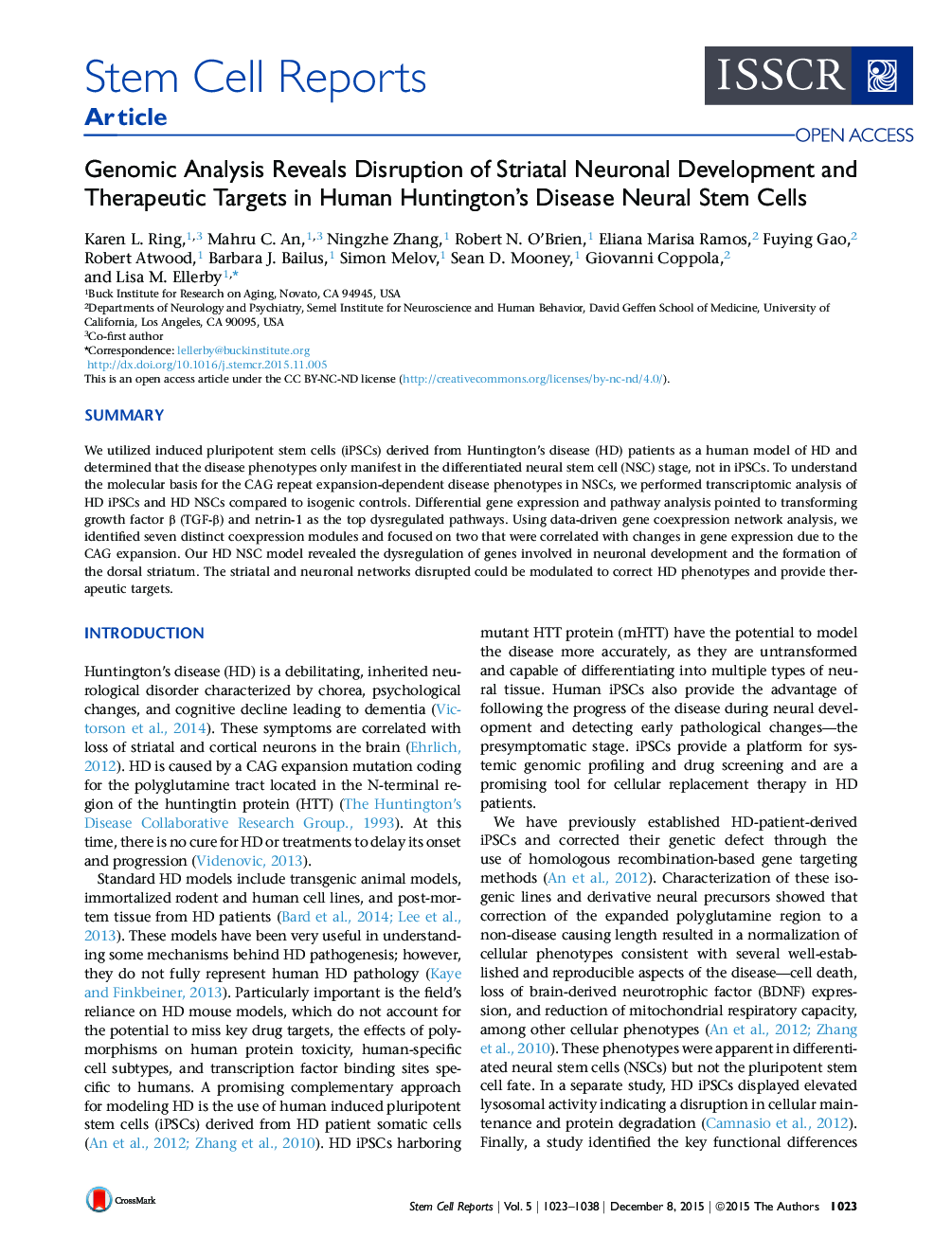| Article ID | Journal | Published Year | Pages | File Type |
|---|---|---|---|---|
| 2093705 | Stem Cell Reports | 2015 | 16 Pages |
•HD stem cell models have phenotypes in the differentiated NSC and not the IPSC state•Bioinformatic analysis of RNA-seq data identifies TGF-β and netrin-1 in HD phenotypes•WGCNA analysis in the HD-NSC linked module to development of the dorsal striatum•Modulation of TGF-β and netrin-1 in HD-NSCs is neuroprotective
SummaryWe utilized induced pluripotent stem cells (iPSCs) derived from Huntington’s disease (HD) patients as a human model of HD and determined that the disease phenotypes only manifest in the differentiated neural stem cell (NSC) stage, not in iPSCs. To understand the molecular basis for the CAG repeat expansion-dependent disease phenotypes in NSCs, we performed transcriptomic analysis of HD iPSCs and HD NSCs compared to isogenic controls. Differential gene expression and pathway analysis pointed to transforming growth factor β (TGF-β) and netrin-1 as the top dysregulated pathways. Using data-driven gene coexpression network analysis, we identified seven distinct coexpression modules and focused on two that were correlated with changes in gene expression due to the CAG expansion. Our HD NSC model revealed the dysregulation of genes involved in neuronal development and the formation of the dorsal striatum. The striatal and neuronal networks disrupted could be modulated to correct HD phenotypes and provide therapeutic targets.
Graphical AbstractFigure optionsDownload full-size imageDownload as PowerPoint slide
